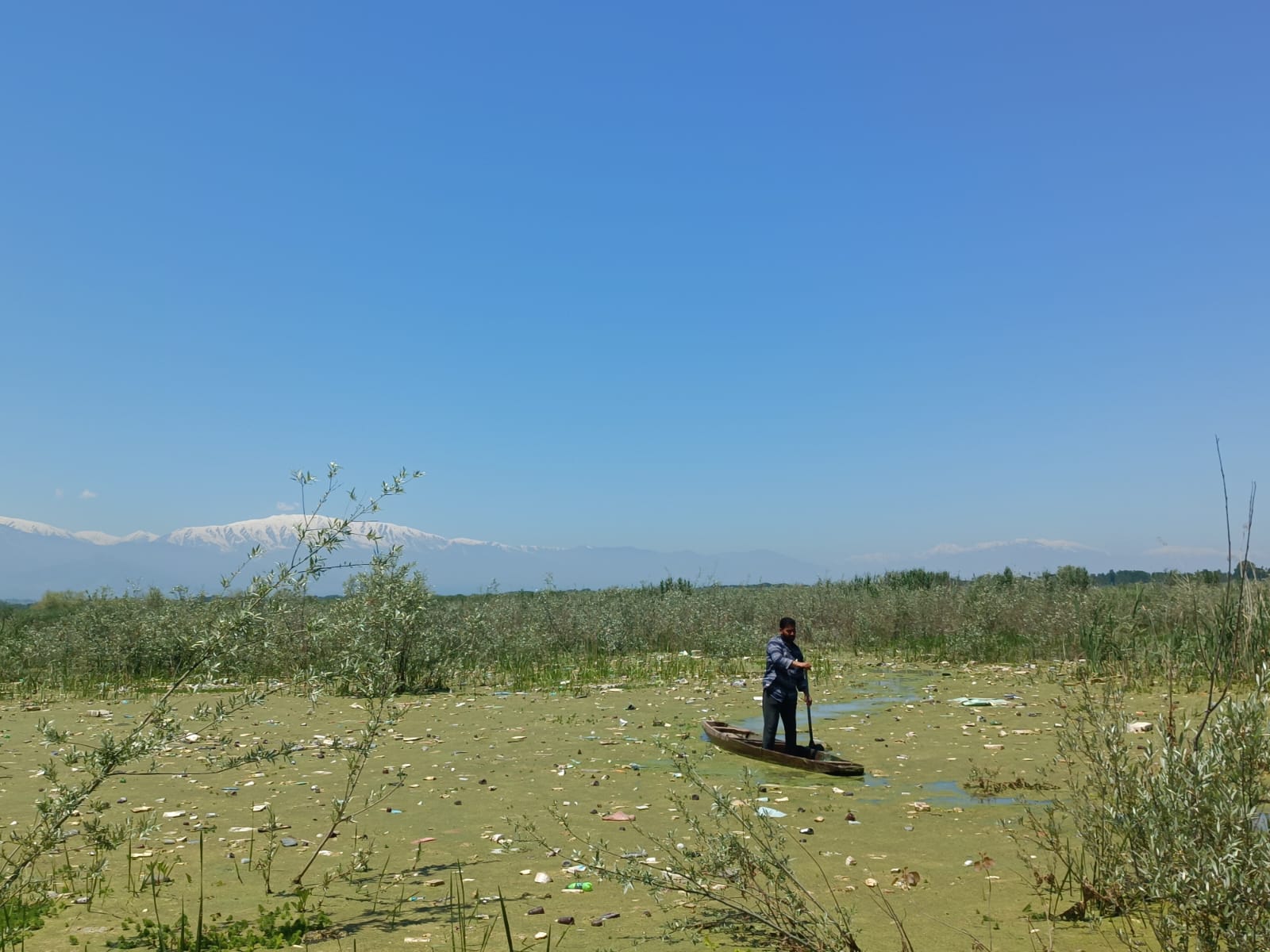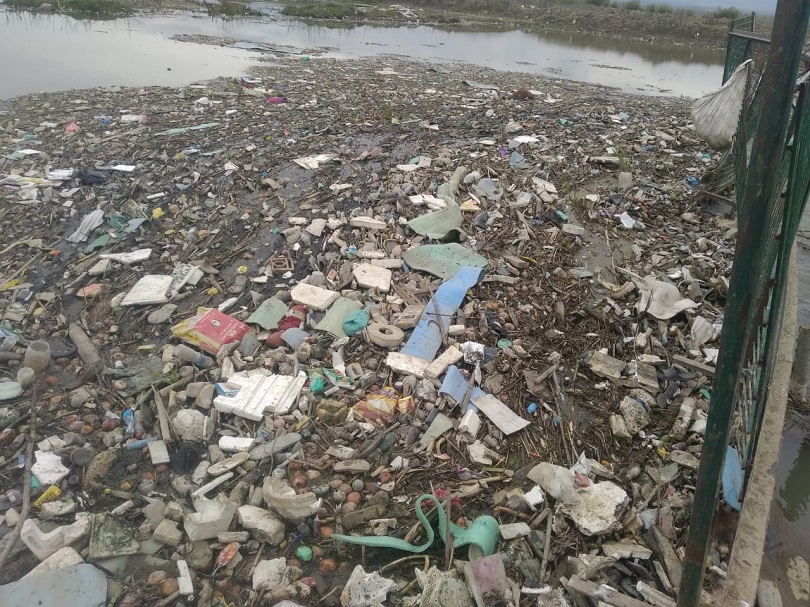
By Parvaiz Bhat
MONTHS after the wildlife department had managed to restore Hokersar Wetland to its earlier status following its degradation during the implementation of flood management project for the Srinagar city, the wetland is now swamped with heavy solid waste pollution.
The solid waste pollution problem in the wetland started after the trash guard (a wire mesh gate), which was installed at the spot where water from flood spill channel flows into Hokersar for stopping trash entering into the wetland, was destroyed by flooding as a result of incessant rains a few weeks back.
Solid waste, which includes household trash, wrapping materials, plastic containers and fast-food wrappers, can be seen floating everywhere in the wetland which not only bodes ill for ecological health of the wetland, but also presents an ugly scene. Even carcasses of animals have also found their way into the wetland.
Locals said that they had noted the restoration of the wetland with great satisfaction following its almost complete degradation until last year as its ecosystem integrity and functioning had got hugely compromised.
“In recent months, Hokersar has got a new lease of life. We were happy to see a lot of birds and their chicks in Hokersar in recent months, something which we had missed for many years. But, the waste which is now floating in it, poses a threat to the wetland,” said Arif Ahmad, a milkman.
He said that the trash gate which was installed for stopping solid waste entering into the wetland, was not allowing any trash into the wetland. “Until the gate was functioning, the wetland was clean. But, the wetland has got much polluted now,” Ahmad said adding that those responsible for fixing this problem should act swiftly so that the wetland is not damaged again. According to Ahmad, villagers around Hokersar are worried about the new threat facing the wetland. Villagers, especially dairy farmers who entirely depend on the wetland for the fodder for their cattle, said that the wetland is not only a bird sanctuary, but an important resource supporting their livelihoods.

People’s Environment Council (PEC), a Srinagar based environmental watchdog has taken a serious note of the situation and has written a letter to the concerned department urging it to get the new trash gate installed as quickly as possible.
“Last week our local partners informed us that the trash gate for stopping solid waste inflow into the wetland that was installed at the spot where water inflows into Hokersar has been damaged and (has) become totally dysfunctional. Attached photographs show the extent of damage, and seem to reflect a tell-tale precursor of, God forbid, another ecological disaster in the making,” the letter reads.
“I am sure you share our concern and the need for early action given that Hokersar is of great local, national, and global ecological, cultural and historical importance. As well known to you, this wetland is not only a significant node of the Central Asian Flyway (CAF), but has been declared as a Wildlife Conservation Reserve by the Government of India (GoI) and Ramsar Bureau. GoI has also shown a renewed commitment to wetland protection in its recent official pronouncements,” the letter further reads.
Urging the department to act promptly, the department head has been requested for initiating remedial measures urgently, especially the restoration of the trash gate so that solid waste doesn’t find its way into the wetland.
Zaffar Mustafa, executive engineer of Flood and Irrigation department told Kashmir Observer that he and his colleagues in the department are trying their best to install the new trash gate as soon as possible. “Hopefully, we will be able to install the gate within the next three days. We couldn’t do it so far because the water level is still high,” Mustafa said.
Hokersar is a winter migratory route for 68 waterfowl species like large egret, great crested grebe, little cormorant, common shelduck, tufted duck and the endangered white-eyed pochard visiting from Siberia, China, Central Asia, and Northern Europe.
Pertinently, the wetland has only started recovering since November last month after suffering extensive degradation. Started in 2018, a government project to deepen a flood channel through Hokersar had drained out its moisture and had turned almost the entire wetland into a land mass. The dredging was aimed at providing a solution to flooding in Srinagar city.
An important precondition for the dredging was setting up a sluice gate so that the wetland could retain 3-4 feet water throughout the year. But this important precondition was overlooked for four years and the work for sluice gates was started only late last year. Locals say the wetland had dried up so much that they were able to drive mini trucks on it to collect cattle fodder.
The Ramsar convention cautions against the mismanagement of delicate wetland ecosystems, stating that the “wise use of wetlands is the maintenance of their ecological character, achieved through the implementation of ecosystem approaches, within the context of sustainable development.”
Follow this link to join our WhatsApp group: Join Now
Be Part of Quality Journalism |
Quality journalism takes a lot of time, money and hard work to produce and despite all the hardships we still do it. Our reporters and editors are working overtime in Kashmir and beyond to cover what you care about, break big stories, and expose injustices that can change lives. Today more people are reading Kashmir Observer than ever, but only a handful are paying while advertising revenues are falling fast. |
| ACT NOW |
| MONTHLY | Rs 100 | |
| YEARLY | Rs 1000 | |
| LIFETIME | Rs 10000 | |










